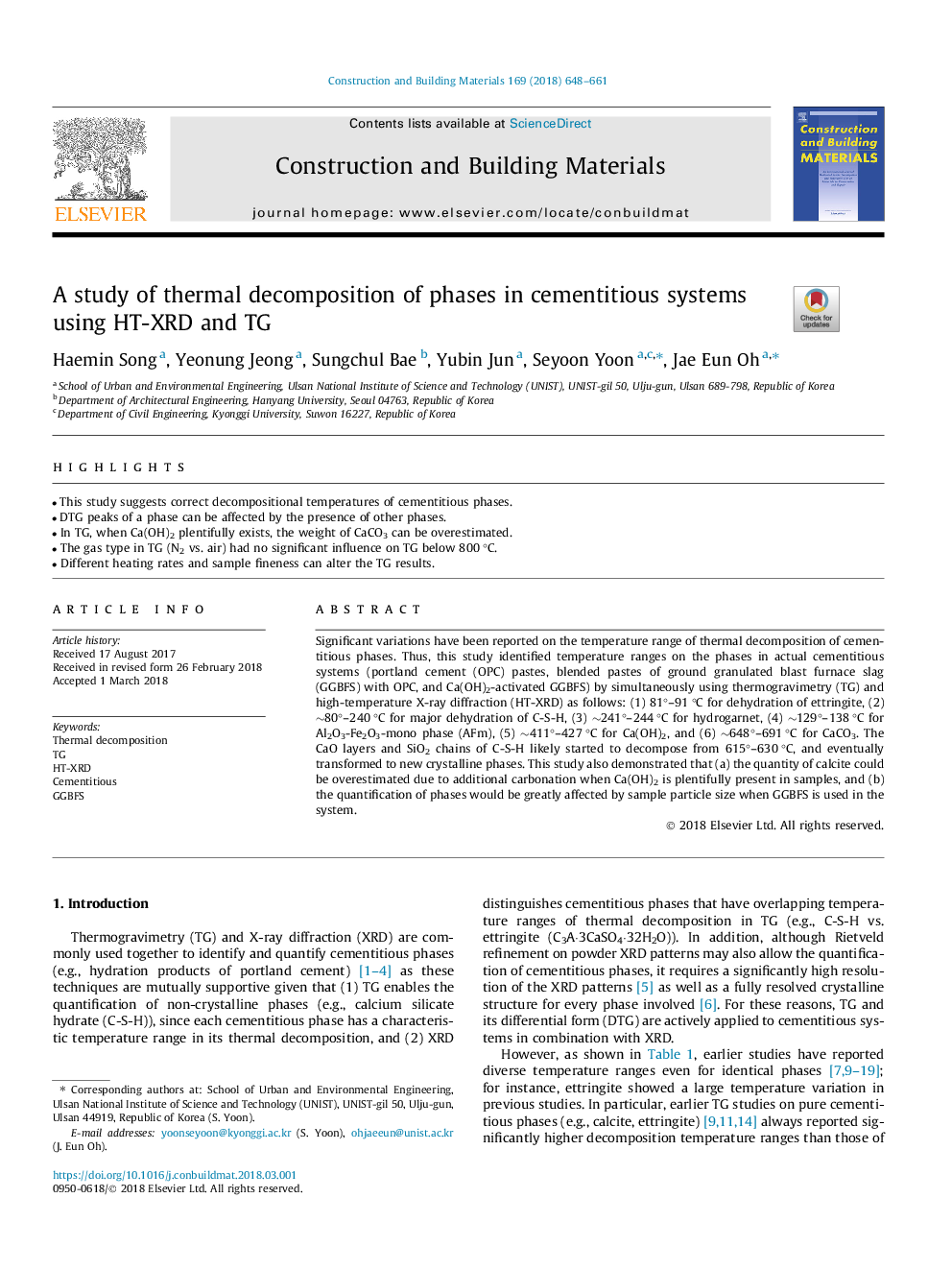| Article ID | Journal | Published Year | Pages | File Type |
|---|---|---|---|---|
| 6714601 | Construction and Building Materials | 2018 | 14 Pages |
Abstract
Significant variations have been reported on the temperature range of thermal decomposition of cementitious phases. Thus, this study identified temperature ranges on the phases in actual cementitious systems (portland cement (OPC) pastes, blended pastes of ground granulated blast furnace slag (GGBFS) with OPC, and Ca(OH)2-activated GGBFS) by simultaneously using thermogravimetry (TG) and high-temperature X-ray diffraction (HT-XRD) as follows: (1) 81°-91â¯Â°C for dehydration of ettringite, (2) â¼80°-240â¯Â°C for major dehydration of C-S-H, (3) â¼241°-244â¯Â°C for hydrogarnet, (4) â¼129°-138â¯Â°C for Al2O3-Fe2O3-mono phase (AFm), (5) â¼411°-427â¯Â°C for Ca(OH)2, and (6) â¼648°-691â¯Â°C for CaCO3. The CaO layers and SiO2 chains of C-S-H likely started to decompose from 615°-630â¯Â°C, and eventually transformed to new crystalline phases. This study also demonstrated that (a) the quantity of calcite could be overestimated due to additional carbonation when Ca(OH)2 is plentifully present in samples, and (b) the quantification of phases would be greatly affected by sample particle size when GGBFS is used in the system.
Related Topics
Physical Sciences and Engineering
Engineering
Civil and Structural Engineering
Authors
Haemin Song, Yeonung Jeong, Sungchul Bae, Yubin Jun, Seyoon Yoon, Jae Eun Oh,
